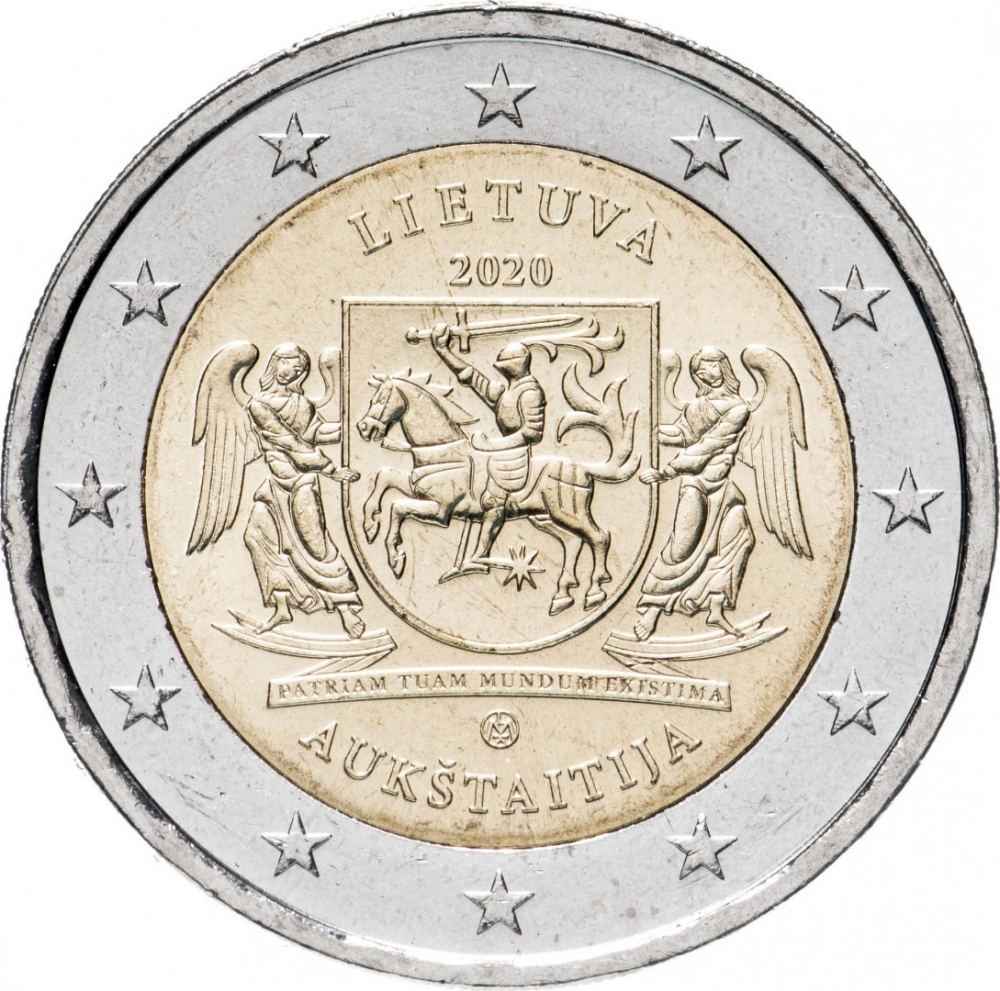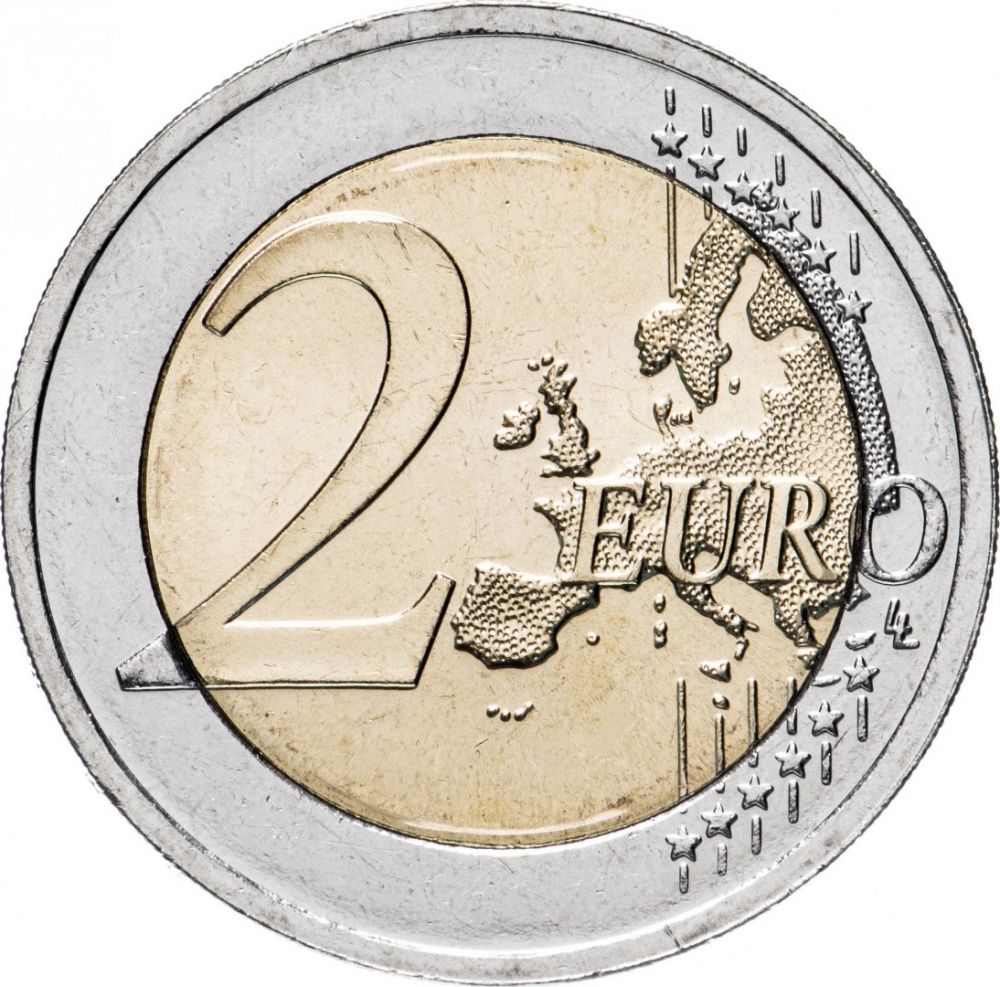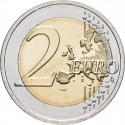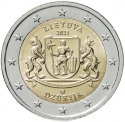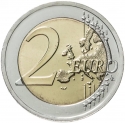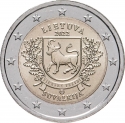You are about to finish your registration. Please check your mailbox (including spam folder). There should be a letter with a confirmation link. Check setting to make sure that your e-mail address is correct.
Send letter againDescription
Bank of Lithuania in 2019 started "Lithuanian Ethnographic Regions" series of coins dedicated to Lithuanian ethnographic regions. The coin of Aukštaitija was the second one.
Lithuania can be divided into historical and cultural regions (called ethnographic regions). The exact borders are not fully clear, as the regions are not official political or administrative units. They are delimited by culture, such as country traditions, traditional lifestyle, songs, tales, etc. No region, except for Samogitia, has ever been a political or an administrative entity. Despite the fact that the regions are not political/administrative entities, most regions have their "capitals" (cities which are commonly considered to be capitals). These cities are not necessarily the largest in the region.
Aukštaitija (Highlands) is the name of one of five ethnographic regions of Lithuania. The name comes from the relatively high elevation of the region, particularly the eastern parts. Aukštaitija is in the northeast part of Lithuania and also encompasses a small part of Latvia and Belarus. The largest city and, though not in any strict political sense, the considered capital of the region is Panevėžys.
Historically Aukštaitija had been correspondent to the Duchy of Lithuania up to the 13th century. In the treaty of Gediminas of 1322, Aukštaitija is named terra Eustoythen ('land of Aukštaitians (=highlanders)'). Aukštaitija was mentioned as Austechia in Chronicon terrae Prussiae written around 1326. Politically, since the end of the 13th century, it comprised the Duchy of Vilnius/Lithuania and Duchy of Trakai, and perhaps was employed to refer to them both taken together. Since the 15th century, corresponding Trakai Voivodeship and Vilnius Voivodeship made up Aukštaitija, as a political and ethnically based unit, also known as Lithuania Propria.
Obverse

|
Depicts a coat of arms of Aukštaitija with a motto in Latin "Your homeland consider as the whole world" means that knowledge of the world starts from the native land. The composition is surrounded by country and region names, year of issue and the mintmark of the Lithuanian Mint. The coin’s outer ring bears the 12 stars of the European Union flag. LIETUVA |
|---|---|
Reverse

|
A geographical map of Western Europe spans the outer ring and inner core on the right side of the coin. The inscription 2 EURO is superimposed over the map of Europe, with the numeral “2” located in an open field representing the eastern Atlantic Ocean. 2 EURO |
| Edge |
'Freedom, Unity, Prosperity' in Lithuanian. LAISVĖ ★ VIENYBĖ ★ GEROVĖ ★ |
2 Euro
Lithuanian Ethnographic Regions
Aukštaitija
Subscribe series
KM# 257
Lithuanian Ethnographic Regions
Aukštaitija
Shop now (1 offer)
Swap now (1 offer)
Characteristics
| Type | Commemorative Issue (Circulating) |
| Material | Bi-Metallic |
| Ring | Cupronickel |
| Center | Nickel Brass |
| Weight | 8.5 g |
| Diameter | 25.75 mm |
| Thickness | 2.2 mm |
| Shape |
|
| Alignment | Medal |
| Mint |
Lithuanian Mint (LMK)
|
